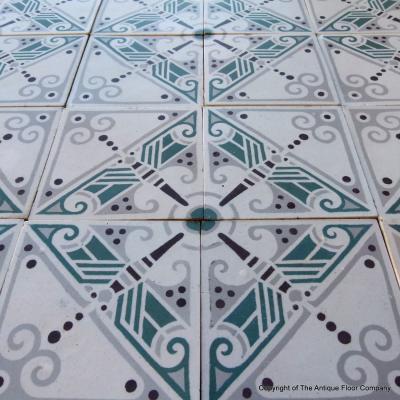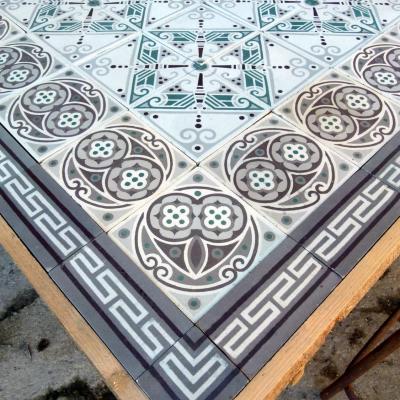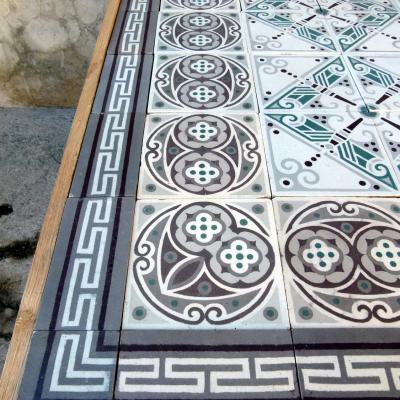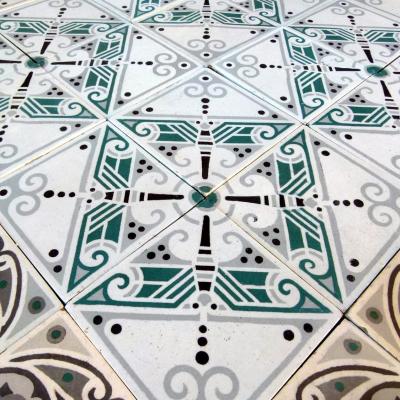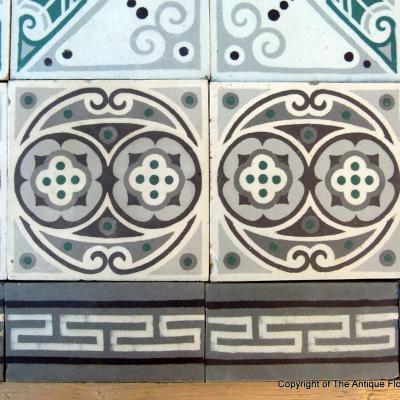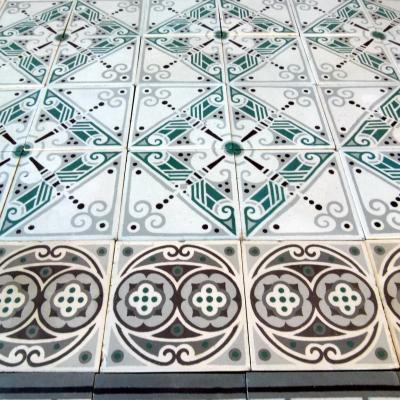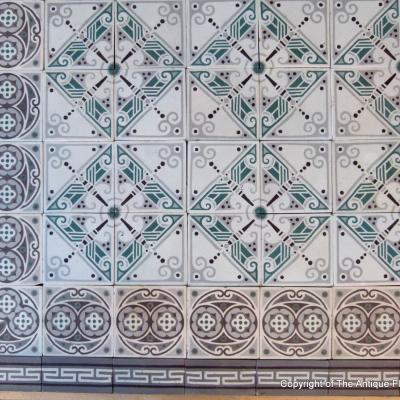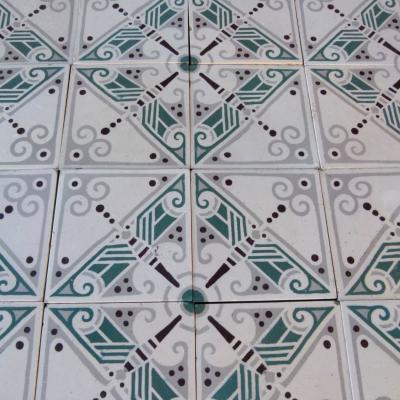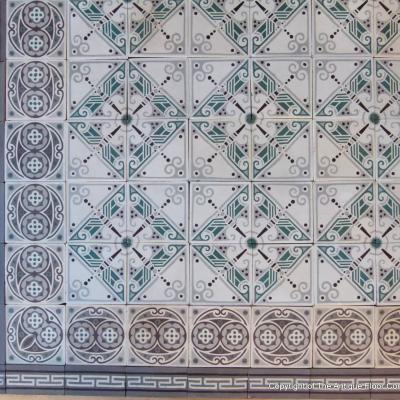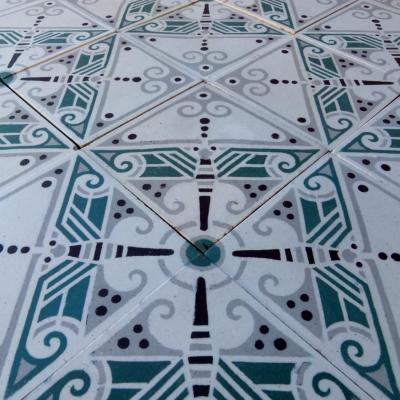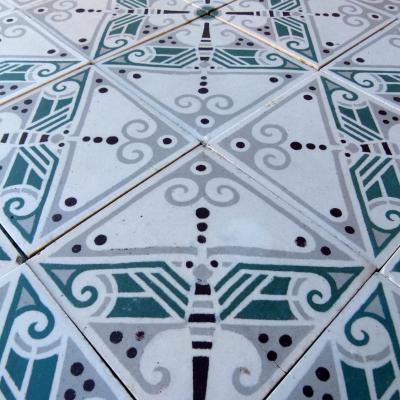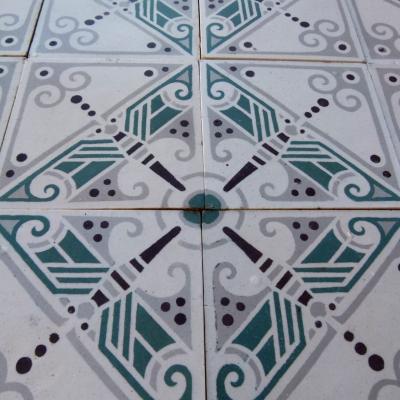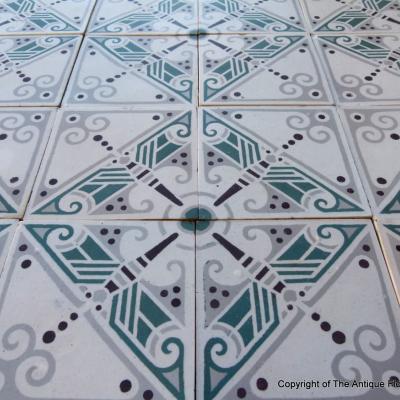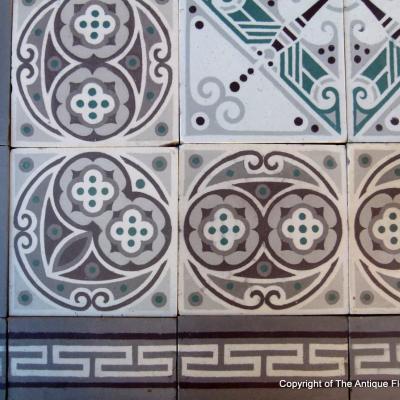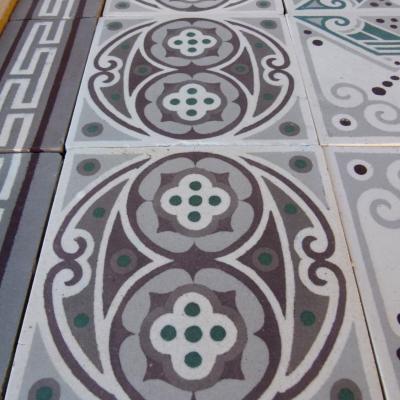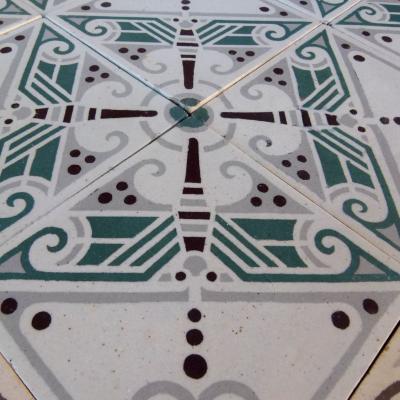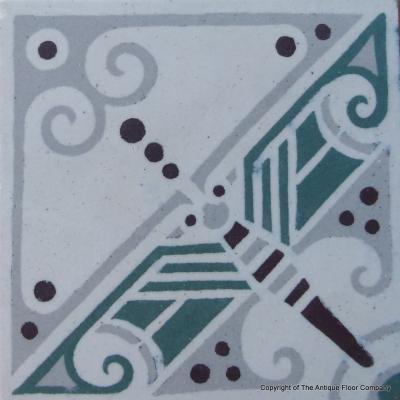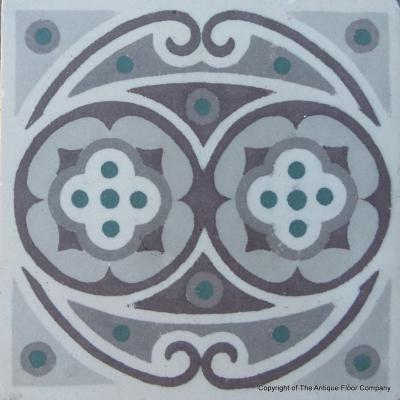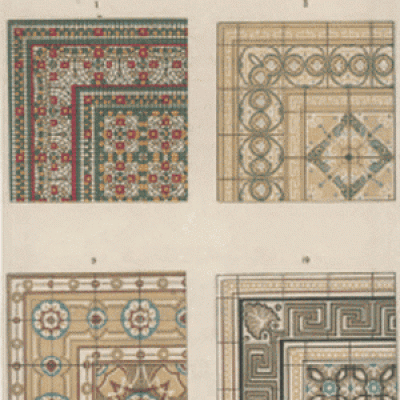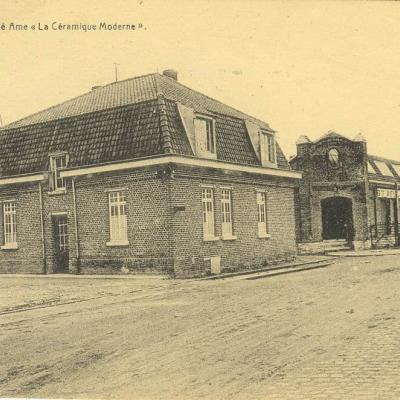An 18m2 / 194 sq ft early Art Deco ceramic floor c.1918-1920
An 18m2+ / 194 sq ft Belgian ceramic floor with its original borders, one full size, one half size. The principal field and large border tiles are 16cm / 6.3 inches sq and the half-sized border 16cm x 8cm.
These handmade tiles, reverse-stamped ‘R’, were manufactured by Societe Anonyme Ceramiques Modernes Rebaix, and we would date them c.1918-1920 as the company started producing 16cm sq. tiles immediately after WWI before moving to 14cm / 5.5 inches sq. tiles a little later. In the photo gallery we have included a scan from a page in their period catalogue where, in the top right panel, the floor can be seen.
The design exemplifies an early expression of the Art Deco movement. Though Art Deco is typically associated with bold forms and streamlined modernity, its roots lie in the decorative arts of the late 19th and early 20th centuries. This transitional period embraced the decorative richness of earlier styles while anticipating the clean lines and motif simplification that would come to define Art Deco in the 1920s and 1930s. As such, these tiles are not just decorative floor coverings, but early architectural expressions of a design language that would soon reshape everything from fashion and furniture to skyscrapers and cinema.
This reclaimed, handmade floor shows a clear movement away from purely organic motifs of earlier decades toward more symmetrical, stylized, and geometric forms. The abstraction of natural elements—such as the dragonfly-like shape—and the emphasis on pattern repetition, structure, and refined elegance reflect the aesthetic priorities of early Art Deco design. The central motif is arranged to create repeating diamond motifs, each formed by four tiles. These tiles are primarily cream-coloured and accented with green and black, featuring crisp lines, curls, and dotted elements. When viewed as a whole, the composition subtly evokes the shape of a dragonfly: the central axis suggests the body, while fan-like green shapes extend outward like wings. The surrounding borders reinforce this symmetry and structure; the inner border is composed of circular floral motifs in white against a taupe-brown background, offering a rounded contrast to the angular central design. The half-sized border features a narrow Greek pattern in mid-grey, neatly framing the entire floor.
The tiles have cleaned well, as a high-resolution section of a randomly selected 1.2m2 / 13 sq ft section of the floor shows in the gallery. Small edge nibbles and grout-able small chips are evident on what is an excellent ceramic 15mm / 0.6 inches thick. A highly fired tile it can be laid inside or outside the home and will work efficiently with underfloor heating systems.
Tile quantities, give or take one or two:-
FIELD tiles – 515 tiles – 13.2m2 / 142 sq ft.
LARGE BORDER tiles – 120 plus 4 corners – 3.2m2 / 34.2 sq ft. – 19.8 linear metres / 65 linear ft.
SMALL BORDER tiles – 120 8 corners – 1.6m2 / 17.1 sq ft. – 19.8 linear metres / 65 linear ft.
NOTE Antique tiles were most commonly made in single or two tile moulds. Before current computer automation methods their moulds were made by hand and the colour slips mixed by eye. Kiln temperatures could also be variable, as could the firing time. The result is that tiles often display subtle size and thickness variations and there can be tonal variations in colours, owing to the slip mixing and/or firing time. All of this makes these handmade tiles unique and adds to their charm. Some floors display their subtle variations in size and tones, some not, but when photographing we always take a random section of the floor so that it is representative of the whole. A tiler should always dry lay a section of the tiles to familiarise himself with them before starting to fix lay.
MAD106



